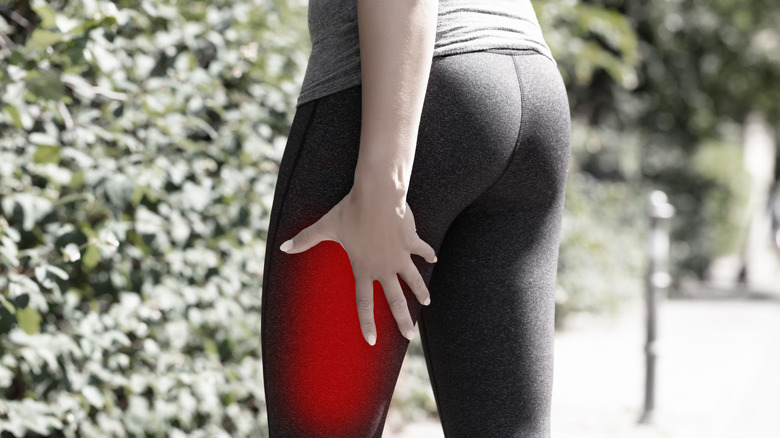What Does It Feel Like When You Have Sciatica?
Have you ever experienced a tingling sensation in the buttocks or legs? Perhaps you're also having lower back pain? These are common symptoms of sciatica, a condition that affects up to 40% of the population, according to 2007 clinical research published in the British Journal of Anaesthesia. This peripheral nervous system disorder can cause severe pain, making it difficult to stay active. It usually occurs around age 50, but it may affect younger people, too.
Sciatic neuralgia, or sciatica, causes pain on one side of the body, explains the Mayo Clinic. Most people experience flare-ups when the sciatic nerve is compressed or pinched. Aging, obesity, physical work, prolonged sitting, and certain diseases, such as diabetes, can contribute to this condition. For example, carpenters and drivers are more likely to experience sciatica pain than the average person, reports the British Journal of Anaesthesia. Another risk factor is cigarette smoking, suggests a 2015 review featured in the American Journal of Medicine.
This condition may also be due to spinal bone spurs, herniated discs, poor posture, or injuries. Sometimes, it affects those with lumbar spinal stenosis, a condition that causes the spinal canal to narrow, notes MedlinePlus. However, several other disorders — including shingles, endometriosis, piriformis syndrome, and hip osteoarthritis — may cause sciatic nerve pain or mimic sciatica symptoms, explains Spine Universe.
Is it sciatica or something else?
Sciatica isn't the same as low back pain. Its symptoms may or may not include back pain, and you can develop this condition despite having a healthy spine. The pain can be felt anywhere along the sciatic nerve, which runs from the lumbar area to the foot and toes, explains the Cleveland Clinic. For example, you may experience a "pins and needles" sensation in your hamstrings after sitting for long periods. Other symptoms may include numbness or weakness in the leg, hips, or buttocks. Some people also have difficulty moving the affected foot and toes, according to NewYork-Presbyterian.
These symptoms can occur suddenly or develop over time, depending on the cause. It's not uncommon to have flare-ups after playing sports or sitting in an awkward position. Sneezing and other sudden movements can make things worse, says the Cleveland Clinic. In rare cases, sciatica may cause difficulty walking, loss of bowel or bladder control, or poor balance. Cauda equina syndrome, a life-threatening complication, can lead to paralysis and permanent bowel dysfunction, warns the NHS.
On the positive side, sciatica may subside on its own. Most symptoms improve within two to three months — even without treatment, reports a 2020 review published in BMJ Open. However, you may still experience flare-ups, especially if you have a chronic condition affecting the sciatic nerve. Treatment usually includes self-help measures, physiotherapy, gentle exercise, medications, corticosteroid shots, or alternative therapies. Surgery is only recommended in severe cases.


